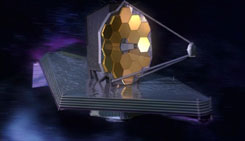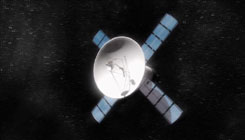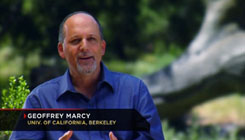This episode is devoted to the workhorses of space exploration:
the planetary surveyors, space telescopes, and phenomenon-chasing
probes that gather the information and samples that scientists use
to make their discoveries and postulate new theories.
The episode covers the history and limitations of our probes,
the difficulties in aiming, launching, and sustaining them,
the key concept of gravitational slingshotting,
the new abilities of ion propulsion,
early probe info from the moon, Venus, Titan, and Enceladus,
the refinement of probe sensors,
and data collection in the search for life beyond Earth.
Also discussed is the Kepler Mission (just launched as this episode
was made) and the principles and limitations of the transit technique
that the Kepler telescope uses to detect extra-solar planets.
Exoplanets discussed include:
- 51 Pegasi b (It is not revealed that this is Bellerophon)
The episode finishes off with an in-depth look at
new high-def ways of investigating our own sun,
and the space probe designed to carry out the mission.
Many actual probes and space telescopes appear to be modelled
faithfully in CGI, allowing viewers to recognize them and their missions
visually.

This is the "James Webb Space Telescope", set to launch in 2015
and reported to have 4x the imaging quality of the Hubble Space Telescope.
And the "Ask the Universe" question for this episode is...
"How long would it take for a space probe to reach
the nearest exoplanet [using the best propulsion available today]?"
- Annabelle C., Erie, Pennsylvania.
from the disc sleeve:
Secrets of the Space Probes:
They've discovered water on other planets and snatched the actual building blocks of life
from a comet's tail, photographing, drilling and even sniffing new worlds in the quest for life.
But can space probes find a new Earth? Or make contact with alien life?
Chapter List:
- Robotic Proxies
- Propelling Probes
- Extrasolar Planets
- Analyzing Comets
- Solar Probe
|
Participants include:
|



















